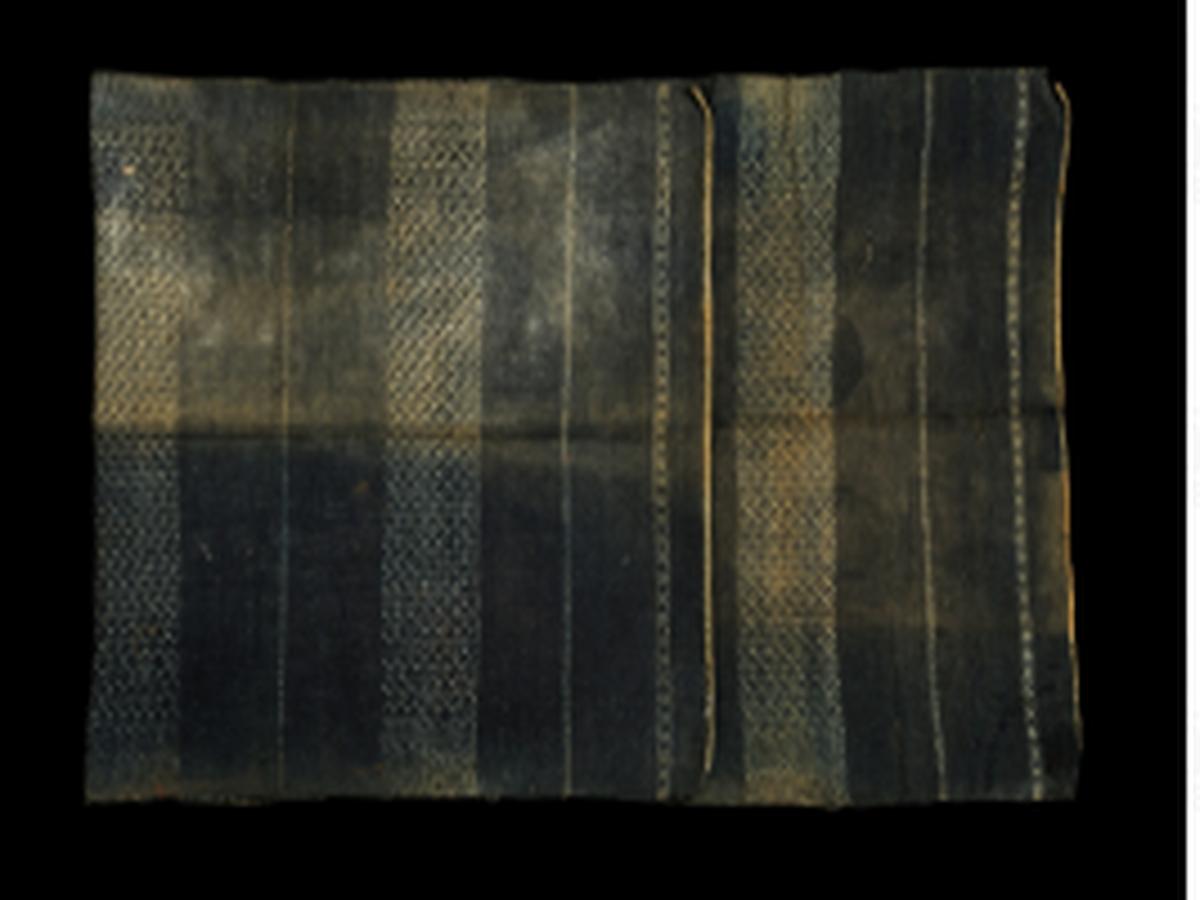State
Tribe Name
Art Type
short description
It serves very well as an example of the traditional tribal textile art, of which this fine cotton cloth, traditionally called as the Garo, is predominantly found in Meghalaya in India. Typically dyed in navy blue, these cotton fabrics are hand woven with traditional looms, remaining very reflective of the ingrained weaving heritage of the Garo people. What sets this cloth apart from others is the white embroidery work which stands in sharp contrast to this dark blue piece of cloth. Geometric patterns primarily inspired by nature appear in their native form and structure, symbolizing that the Garos have a penchant for symmetry and equilibrium in their expression. Besides geometry, undulating lines form another very common motif, which is said to give shape to the flow of water, movement, or the rhythm of life-all major themes in the folktales and everyday lives of the Garo people.
Thumbnail

Filter Postion
Left
Filter Background
Off
Theme
Filter Header Image

content
Image

description
It serves very well as an example of the traditional tribal textile art, of which this fine cotton cloth, traditionally called as the Garo, is predominantly found in Meghalaya in India. Typically dyed in navy blue, these cotton fabrics are hand woven with traditional looms, remaining very reflective of the ingrained weaving heritage of the Garo people. What sets this cloth apart from others is the white embroidery work which stands in sharp contrast to this dark blue piece of cloth. Geometric patterns primarily inspired by nature appear in their native form and structure, symbolizing that the Garos have a penchant for symmetry and equilibrium in their expression. Besides geometry, undulating lines form another very common motif, which is said to give shape to the flow of water, movement, or the rhythm of life-all major themes in the folktales and everyday lives of the Garo people.
Every corner of the cloth is woven at ends with designed lines or borders, generally serving as a frame to the central embroidered motifs. These ends may also have slight differences, which symbolize kinship or regional identity within the tribe, thus forging a distinct identity. For instance, both men and women will come adorned with this cloth either as wear or a wrap during general gatherings, devotional festivals, or even rituals. In addition to just the pretty picture this cloth presents, it has cultural connotations and is often passed along from generation to generation or presented as a gift for important events such as marriage or coming-of-age ceremonies. It's a matter of mark and respect for the Garo people as it shows their artistry, relationship to nature, and traditional values.
Image Mode
landscape
promoted
On
Verified
Off
